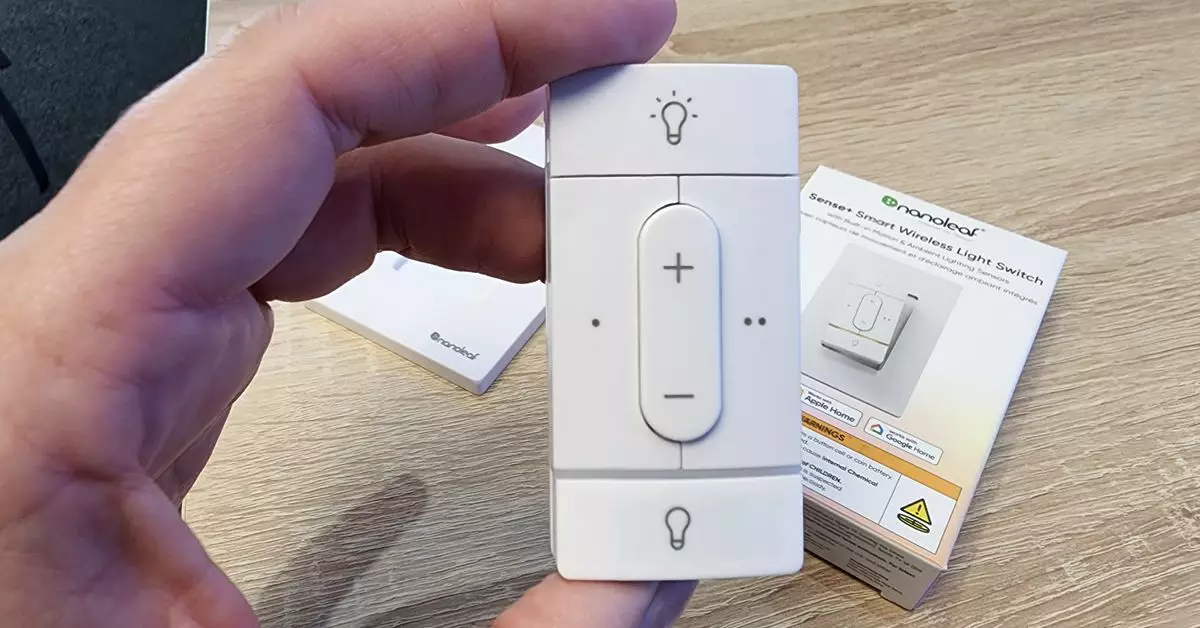Smart home technology has been rapidly advancing over the past decade, with companies like Nanoleaf constantly innovating to bring new products to the market. However, the development of Nanoleaf’s smart switch, Sense Plus, has not been without its challenges. Despite nearly a decade of development, the road to the release of this smart switch has been filled with obstacles and pivots. In this article, we will explore the journey of Nanoleaf’s smart switch development and the complexities involved in creating a reliable and efficient wireless control system for smart lighting.
Nanoleaf’s Sense Plus Smart Wireless switch has been long-anticipated by fans of the company’s RGB lighting line. The device promises physical control over Nanoleaf’s smart lighting system, allowing users to easily adjust their lights without the need for voice commands or a smartphone. The Sense Plus features two configurable buttons that can be programmed using Nanoleaf’s app or integrated with other smart home platforms like Apple Home and Samsung SmartThings through Matter. This functionality opens up a world of possibilities for creating custom automations and scenes to enhance the smart home experience.
The development of the Sense Plus smart switch involved the creation of a new proprietary protocol called Litewave. This technology was necessary to ensure seamless communication between the switch and Nanoleaf’s lights, regardless of the connectivity protocol used by the lights (Thread, Bluetooth, or Wi-Fi). By using Litewave in addition to Matter over Thread, Nanoleaf was able to achieve instantaneous control and reliable performance without the need for additional devices like Thread border routers or Matter controllers.
Despite Nanoleaf’s early adoption of Thread technology, the company encountered challenges with Matter over Thread implementation. The complexity of the Matter protocol and its various platforms posed difficulties in ensuring a seamless user experience. This led to the development of Litewave as a solution to provide a robust and reliable local connection for the Sense Plus smart switch. The challenges faced by Nanoleaf highlight the complexities of integrating multiple technologies to create a cohesive smart home ecosystem.
In a surprising shift away from relying solely on Thread technology, Nanoleaf introduced its first Matter over Wi-Fi light bulb, the Essentials Matter Wi-Fi A19 Smart Bulb. This decision was driven by the company’s desire to reach a broader audience, as Wi-Fi technology is more widely recognized and adopted compared to Thread. By expanding its product lineup to include Matter over Wi-Fi devices, Nanoleaf is adapting to the changing landscape of smart home technology and the preferences of mass-market consumers.
The development of Nanoleaf’s Sense Plus smart switch underscores the challenges and complexities involved in creating innovative smart home products. By leveraging a combination of proprietary protocols and industry standards like Matter and Thread, Nanoleaf has been able to produce a wireless switch that offers reliable performance and seamless integration with its smart lighting ecosystem. As the smart home market continues to evolve, companies like Nanoleaf will need to adapt and innovate to meet the demands of consumers and stay ahead of the competition.


Leave a Reply